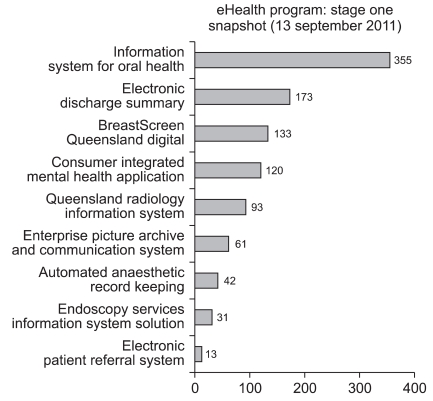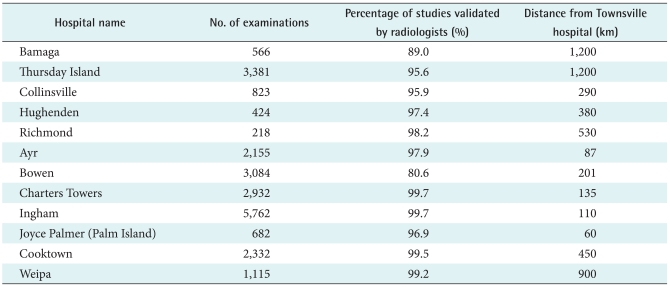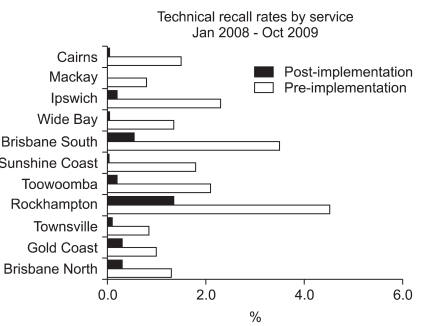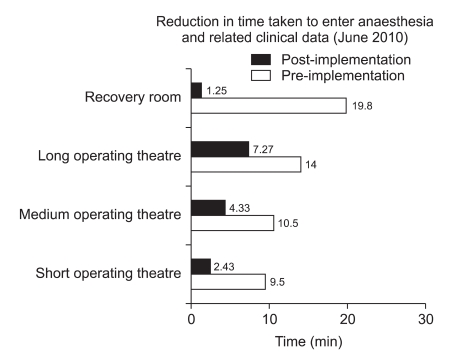eHealth in Queensland: Progressing towards a Patient Centric, Networked Model of Care
Article information
Abstract
Objectives
Factors such as an ageing and rapidly growing population, an increase in chronic disease rates and a global shortage of health professionals place increased pressure on Australian health departments to deliver more with less. To address the challenge faced by clinicians and support staff, the Queensland Department of Health established an eHealth strategy in 2006 with a vision to deliver a patient centric, networked model of care.
Methods
Queensland Health's eHealth program is a complex program which brings together the outputs and products of numerous projects to provide new clinical capabilities across the state. To ensure the potential benefits of the Queensland Government investment are realised, the eHealth program is implementing comprehensive benefits management to plan for key outcomes and benefits, support projects to deliver those benefits and ensure that they are delivered through ongoing measurement.
Results
The first stage of the eHealth program is already delivering benefits across the health department with a number of projects currently live in numerous sites across Queensland.
Conclusions
By adopting an evidence based benefits management approach, Queensland Health's eHealth program is able to demonstrate the achievement of these benefits with tangible evidence that will create momentum for change in the short term, provide the evidence for future funding applications in the medium term, and build an understanding of the economic impacts of eHealth in the long term.
I. Introduction
Factors such as an ageing and rapidly growing population, an increase in chronic disease rates and a global shortage of health professionals place increased pressure on Australian health departments to deliver more with less [1]. Across Queensland and Australia, clinicians and supporting staff currently spend significant amounts of time trying to access patient information and administrative paperwork. There are many reasons for this including having only fragmented or partial information available, information not transferring with a patient through their care and a lack of access to information where it is needed. Within Queensland, these challenges are further complicated by the geographical size of the state and the issues created by the physical distance between facilities [2]. To address the challenge faced by clinicians and support staff, the Queensland Department of Health established an eHealth strategy in 2006 with a vision to deliver a patient centric, networked model of care.
Queensland Health, as it is now known, is currently responsible for the management, administration and delivery of Queensland public sector health services. This responsibility is assigned across the state through a network of 16 Health Service Districts, a range of statewide support services - such as pathology and radiology - and corporate support functions [3]. Queensland Health's eHealth program has approved funding of $243 million over four years to deliver information and communication technology (ICT) systems that improve the ability of clinicians to communicate and collaborate for better patient outcomes and enhanced organisational capacity. The goal of the eHealth program is to ultimately allow clinicians and staff to access information about the right patient, to the right place at the right time [4].
eHealth has been recognised by the Australian Government as a key enabler for providing significant benefits across the health continuum [5]. These benefits include improvements in the accessibility, safety, quality and efficiency of healthcare services [5,6]. To ensure the potential benefits of the Queensland Government investment are realised, the eHealth program is implementing comprehensive benefits management to plan for key outcomes and benefits, support projects to deliver those benefits and ensure that they are delivered through ongoing measurement. Demonstrating the achievement of these benefits with tangible evidence is critical for the ongoing success and support of Queensland Health's eHealth program.
II. Case Description
Queensland Health's eHealth program is a complex program which brings together the outputs and products of numerous projects to provide new clinical capabilities across the state. These capabilities are aligned with the key priority areas defined in the Queensland Health eHealth strategy which focus on improving population health outcomes and delivering safe, sustainable and accessible quality healthcare services that are patient-focused [4]. In order to successfully deliver sustainable solutions to assist clinicians and support staff to improve the patient journey, Queensland Health's eHealth program is being delivered via a phased approach.
1. Stage One
Stage one (2007-2010) focused on the state-wide rollout of priority clinical and administrative systems and supporting infrastructure that can deliver benefits back to clinicians, patients and supporting staff. Provided below is a summary of stage one projects within Queensland Health's eHealth program.
1) Digital breast screening
Queensland women now have access to digital mammography across the State in both fixed and mobile locations through the BreastScreen Queensland (BSQ) digital project. Digital breast screening eliminates number of patient recalls due to technical faults with film processing. The project is also focused on addressing shortages in the number of readers and radiologists by enabling a statewide reading model.
2) Electronic school oral health system
Queensland Health currently provides oral health services to child and adolescent patients through fixed or mobile dental facilities covering approximately 2,000 State, Independent and Catholic schools across Queensland [7]. School oral health staff are now able to record and access oral health records using one enterprise system called the Information System for Oral Health (ISOH). The system enables improved decision making, patient prioritising and dental care in schools.
3) Electronic mental health application
Mental health clinicians are now able to access and share all relevant consumer information across Queensland through the Consumer Integrated Mental Health Application (CIMHA). Currently, CIMHA has replaced 21 out of date systems across Queensland Health.
4) Electronic anaesthetic record keeping application
Queensland hospitals are now able to produce standardised, legible and consistent anaesthetic records due to the implementation of the Automated Anaesthetic Record Keeping (AARK) solution. AARK is enabling improved patient outcomes, clinical decision making and effectiveness replacing manual paper based processes. The solution is also benefiting rural and remote regions, with senior anaesthetists from metropolitan hospitals being able to remote in to support local clinicians during their procedures.
5) Electronic patient discharge system
Post-discharge patient care has been significantly improved through the implementation of the Electronic Discharge Summary (EDS) solution. EDS is providing timely discharge information to support the continuity of care and is allowing clinicians to spend more time with patients and less time on record keeping.
6) Electronic endoscopy solution
The Endoscopy Services Information System Solution (ESISS) is providing better records and more reliable information for patients requiring an endoscopy service.
7) Electronic patient referral system
The electronic patient referral system is allowing general practitioners and Queensland Health specialist outpatient departments to receive and view patient referrals electronically. The solution decreases the time spent on triaging and categorising patient referrals, increases own source revenue generated by referrals and consolidates the number of referral systems around the State to mitigate duplication of cost and effort.
8) Tele-radiology network
The tele-radiology network is allowing medical images to be sent electronically to radiologists in Queensland Health facilities or external private reporting services for review and report back to local doctors. The network is made up of the Queensland Radiology Information System (QRiS), Enterprise Picture Archive and Communication System (PACS) and External Radiology Reporting Interface (ERRI). The network is allowing Queenslanders equity of access to specialist radiology opinions in clinically relevant timeframes. It is also reducing the need for rural and remote patients to travel to metropolitan facilities for specialist opinions which is helping to reduce the travel and financial burdens on rural and remote patients.
2. Stage Two
Stage two (2010-2012) of the eHealth program will see the delivery of further systems that leverage of stage one outcomes.
1) Electronic medical record viewing application
Delivery of an electronic medical record viewing application (The Viewer) is in progress and is anticipated to be live in 250 Queensland Health sites by the first quarter of 2012. The Viewer is a read only web based browser that leverages off the technologies used by other Queensland Health systems and has the ability to be implemented as an enterprise solution. The Viewer will bring together patient information from all facilities across Queensland into one place and allows clinicians to have faster access to patient information and is assisting with enhanced clinical decision making.
2) Electronic intensive care unit information solution
The second stage of Queensland Health's eHealth program will also include the delivery of an Intensive Care Unit Clinical Information System (ICUCIS). The ICUCIS is an enterprise clinical information system that will provide a comprehensive ICU medical record and clinical data repository. The ICUCIS is a standardised solution that supports and electronic patient record in the Queensland Health ICU environment. The solution was recently implemented at Gold Coast Hospital (GCH) and is currently funded to implement at an additional three facilities in 2011-2012.
3) Integrated electronic medical record (ieMR) application
An ieMR application is currently under procurement and will cover six priority areas as identified by senior Queensland Health clinical staff. Priority areas include order entry, results reporting, medication management, scheduling, electronic discharge summary and clinical notes. An ieMR will enable a patient centric focus to health care delivery against a networked model of care and bring significant changes to the business and clinical processes within Queensland Health. Clinicians and supporting staff will be given access to the ieMR application via a gradual phased roll out.
3. Benefits Management
In 2009, Queensland Health's eHealth program developed a portfolio-level approach to managing the realisation and reporting of benefits delivered to the department by technology projects. The approach describes the relationships between outcomes delivered by projects with the tangible benefits obtained by patients and clinicians as they journey through the health system.
For the eHealth program, the benefits realisation management approach is focused on achieving benefits that are important to patients, clinicians and to Queensland Health: 1) Supporting improvements for patient access to care; 2) Promoting responsive, client-centred care; 3) Enhancing effectiveness of care through supporting best-practice; 4) Improving safety; 5) Supporting continuity of care between projects; 6) Supporting a sustainable and efficient health system.
III. Results
The first stage of the eHealth program is already delivering benefits across the health department with a number of projects currently live in numerous sites across Queensland (Figure 1).

eHealth program stage one snapshot: total sites live across Queensland Health (as at 13 September 2011).
Within Queensland Health's eHealth program, benefits are measured by projects in their implementation sites. This approach recognises that benefits are central to stakeholder engagement and change management approach at the facility level. The following selection from three projects gives an indication of how the benefits framework is applied and how benefits are being measured.
1. Queensland Radiology Information System (QRiS)
QRiS enables diagnostic images to be sent to available radiologists for reporting across the state to improve capacity and quality of radiology reporting. The QRiS is currently live at 93 sites across Queensland and has delivered over 800,000 validated radiologist reports to rural and remote Queensland.
As an example of the new capacity delivered at one site, the following information is provided from radiologists at the Townsville Health Service District during November 2010 (Table 1). Previously, images reported at these sites remote to Townsville may never have been viewed or reported by a radiologist. Although up to 1,200 kilometres away from an available radiologist, patients in these areas now have access to the Townsville service through QRiS.

Number of transferred and reported radiology images from remote sites to Townsville radiologists for reporting
For patients, particularly in rural and remote areas, having their images reviewed by a radiologist via the QRiS has two main benefits: 1) Patients may avoid having to travel from their communities by having an accurate, confident diagnosis from an expert radiologist performed remotely. 2) There is less likelihood of a diagnosis being missed or misinterpreted through having an expert radiologist review, and as a result, patients can avoid an adverse outcome from insufficient or incorrect treatment.
2. BreastScreen Queensland Digital
The BSQ Digital System is enabling improved service quality and capacity for breast cancer screening across Queensland by providing reductions in: 1) the time required to perform screens; 2) the time between the screen and the client being notified of results; 3) the number of recalls for technical reasons (Figure 2).

Reduced number of women required to return for additional breast screening for technical reasons, pre and post implementation of BreastScreen Digital System.
For Queensland women, being recalled to have a second mammogram can provoke high levels of anxiety and stress - regardless of whether it is for technical scanning reasons. Similarly, waiting for scan results can also be a highly stressful time. By reducing these two factors, BSQ Digital has improved the experience of screening for women. In addition, the new, more streamlined scanning process has meant that patients can spend less time on their appointments making them less inconvenient as well as enable higher efficiency for screening units. As a result, more Queensland women can be screened to improve cancer detection and early treatment for better overall health outcomes.
3. Automated Anaesthetic Record Keeping (AARK)
The AARK project has delivered a state-wide perioperative solution that creates a standardised anaesthetic record of patient care to 43 Queensland Health hospitals. Clinicians at hospitals with an AARK solution now spend less time on recording observations and more time with the patient in operating theatres as the system has replaced previous manual, paper-based record keeping processes.
The reduction in time taken to enter anaesthesia and related clinical data was assessed across two Queensland Health hospitals by comparing baseline measurements with the data obtained from the post-implementation measurements (Figure 3). The results indicated significant time savings for clinicians when an automated anaesthetic record keeping system is used.

Reduction in time taken to enter anaesthesia and related clinical data in Princess Alexandra and Cairns Hospitals in 2009.
AARK particularly benefits rural and remote regions, with senior anaesthetists from metropolitan hospitals being able to remote in to support local clinicians during their procedures. AARK has improved clarity, consistency of patient data recording, and access to patient information; the result of which is better patient outcomes and improved clinical decision making and effectiveness.
IV. Discussion
Queensland Health's eHealth program is a long term solution that is assisting the department to meet growing need and demand and will improve the quality of health care for years to come. To date, the program is progressing towards achieving the vision of a patient centric, networked model of care through the implementation of ICT projects in numerous sites across the state. The examples of Queensland Health's eHealth projects in this case report provide evidence of the potential benefits available to regions implementing eHealth initiatives.
By adopting an evidence based benefits management approach, Queensland Health's eHealth program is able to demonstrate the achievement of these benefits with tangible evidence that will create momentum for change in the short term, provide the evidence for future funding applications in the medium term, and build an understanding of the economic impacts of eHealth in the long term.
Notes
No potential conflict of interest relevant to this article was reported.